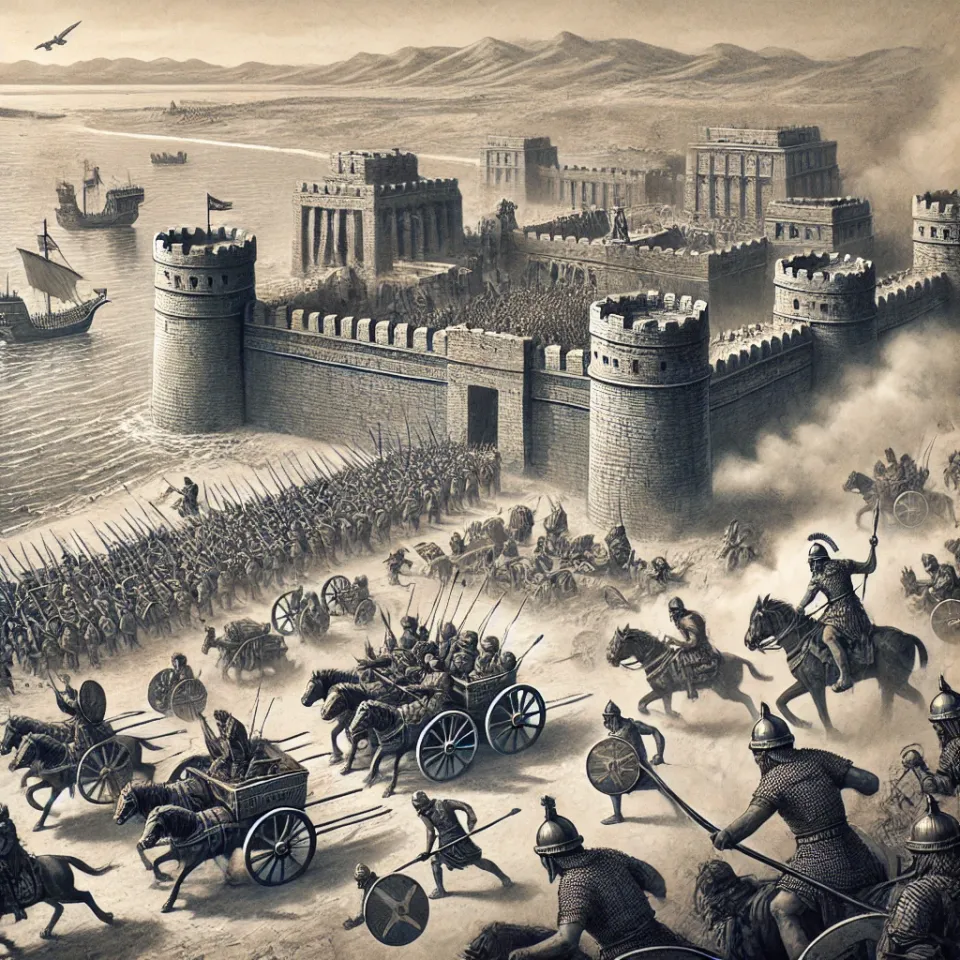Ezekiel and the Destruction of Tyre: When Biblical Prophecy Struck Out

TL;DR
Ezekiel 26 predicts Nebuchadnezzar would destroy Tyre and it would never be rebuilt. But Tyre survived the siege, fell centuries later to Alexander the Great, and still exists today. In short: Ezekiel missed the mark.
If you’ve ever cracked open the Book of Ezekiel and made it to chapter 26, you might’ve raised an eyebrow. In this dramatic chapter, the prophet Ezekiel lays down a striking prediction: the Phoenician city of Tyre, mighty and proud, would be utterly destroyed by none other than King Nebuchadnezzar of Babylon—and would never rise again.
Bold words. But history? It had other plans.
What Ezekiel Claimed Would Happen
The prophecy likely dates to around 587 BCE, right in the thick of the Babylonian exile. Here’s the relevant stretch from Ezekiel 26:7–14 (NRSVue):
“I will bring against Tyre from the north King Nebuchadrezzar of Babylon... He shall set a siege wall against you, cast up a ramp... They shall plunder your riches... I will make you a bare rock... You shall never be rebuilt.”
This wasn’t subtle. Ezekiel foresaw a total wipeout—Tyre flattened, silenced, erased from the map, and consigned to history.
So… Did That Actually Happen?
Not really. Nebuchadnezzar did go after Tyre in 586 BCE, just a year after the prophecy was made. His siege lasted an astonishing thirteen years, which, if nothing else, shows persistence. But while Babylon managed to subdue the mainland portion of Tyre, the real heart of the city—the fortified island stronghold—held out.
In fact, Tyre’s island fortress would go on to thrive for centuries. It wasn’t until 332 BCE—more than two centuries later—that Alexander the Great finally took it down. And even then, the city didn’t stay dead. It was rebuilt. People live there today. You can Google it.
So much for You shall never be rebuilt.
Even Ezekiel Seems to Admit It Didn’t Work Out
Interestingly, Ezekiel himself seems to walk back the triumph a bit in chapter 29:
“King Nebuchadrezzar of Babylon made his army labor hard against Tyre… yet neither he nor his army got anything from Tyre to pay for the labor that he had expended” (Ezekiel 29:18, NRSVue).
In prophetic terms, that’s about as close to “well… that didn’t go as planned” as scripture gets.
What Do the Scholars Say?
Many modern scholars acknowledge the clear mismatch between prophecy and history. John Barton notes:
“Ezekiel’s oracles against the nations, including Tyre, reflect a prophetic imagination rather than precise historical forecasting” (Barton 203).
Michael D. Coogan echoes that view:
“The destruction of Tyre by Nebuchadnezzar did not materialize as Ezekiel envisioned, though the prophecy may have reflected real political tensions of the time” (Coogan 112).
In other words, Ezekiel was likely responding to geopolitical anxieties and making bold claims to rally the exiled Israelites—not predicting the future with divine accuracy.
So Was Ezekiel Wrong?
Yep! Completely wrong. The prophecy promised a complete and permanent destruction by Nebuchadnezzar. That didn’t happen. Even Alexander’s conquest, while devastating, came far too late to count as fulfillment. And Tyre’s continued existence makes the “never be rebuilt” claim impossible to defend.
The prophecy reads less like divine foreknowledge and more like an ancient version of political commentary: dramatic, theologically charged, and not exactly precise.
Final Thoughts
Ezekiel 26 is a fascinating case study in how biblical prophecy often reflects ideological hopes more than literal timelines. The destruction of Tyre was clearly imagined as a divine takedown of arrogance and wealth. But history, as it often does, had a much messier story to tell.
Works Cited
Barton, John. A History of the Bible: The Book and Its Faiths. Viking, 2019.
Coogan, Michael D. The Old Testament: A Historical and Literary Introduction to the Hebrew Scriptures. Oxford University Press, 2011.
The Holy Bible: New Revised Standard Version, Updated Edition. National Council of Churches, 2021.


Comments ()